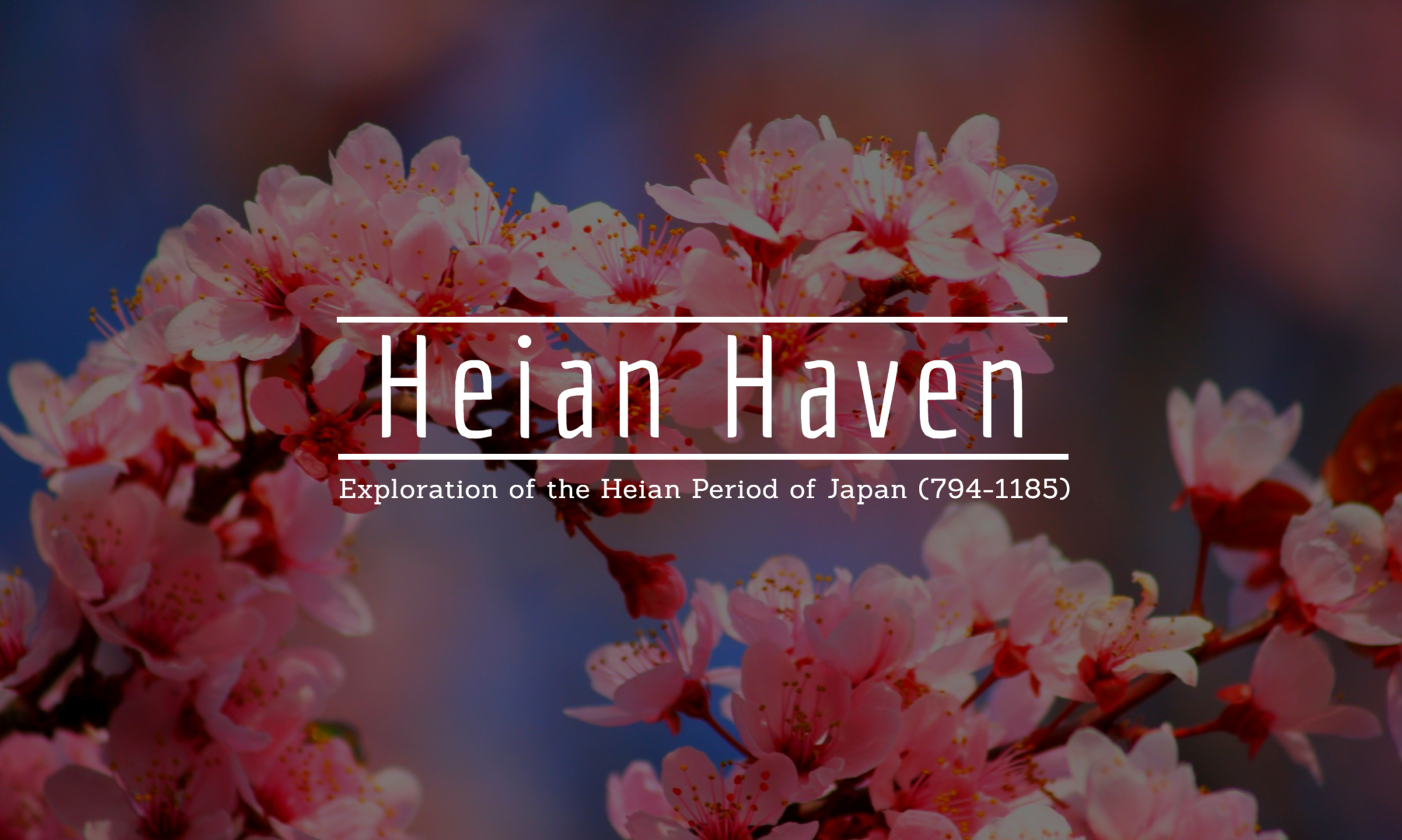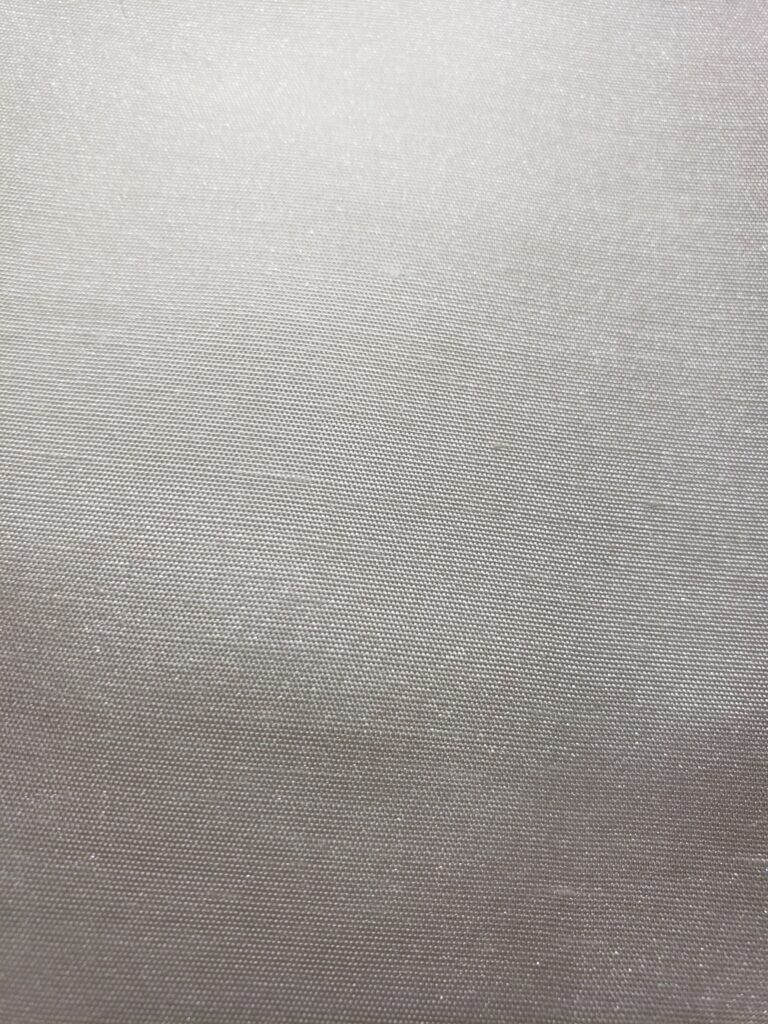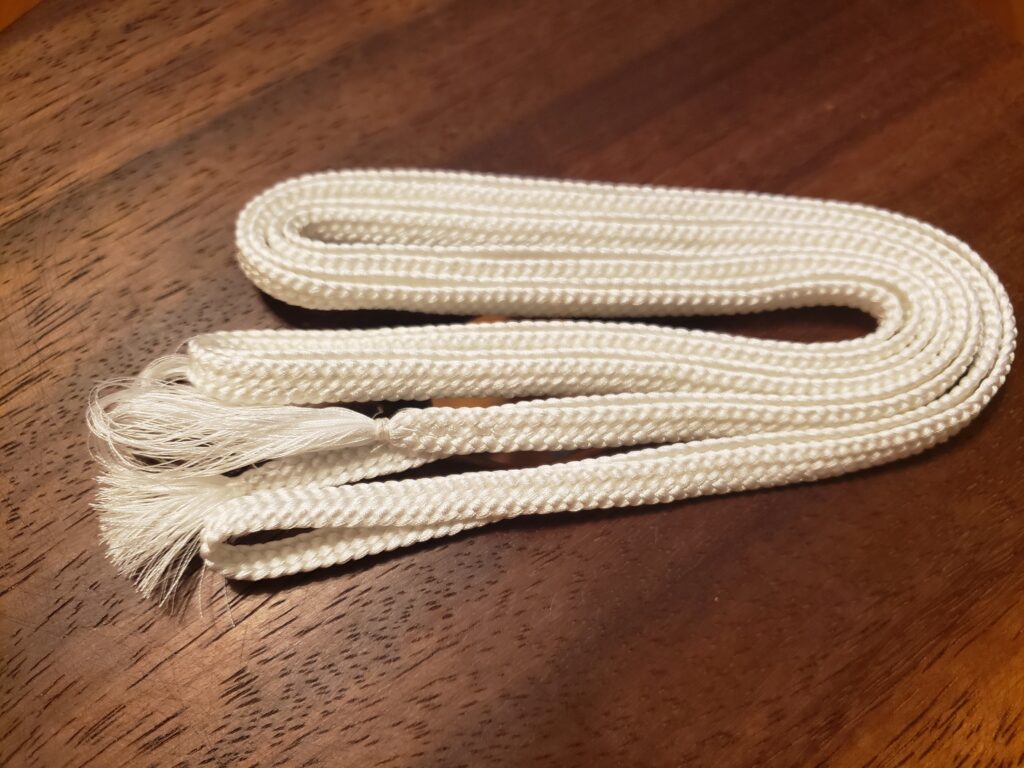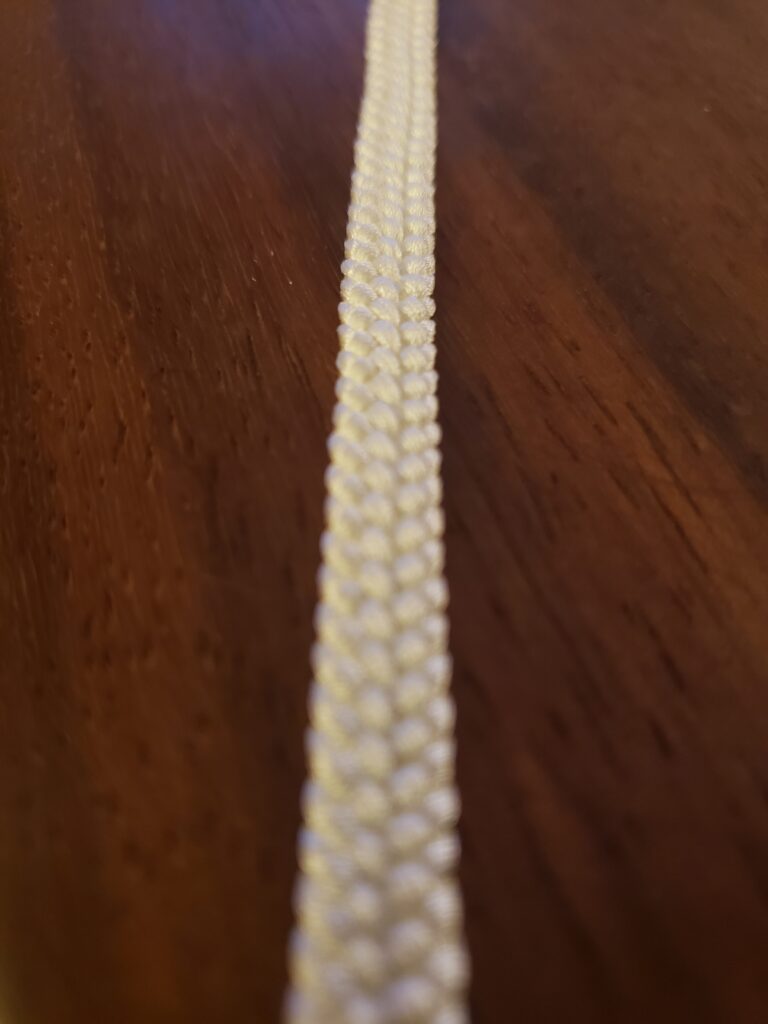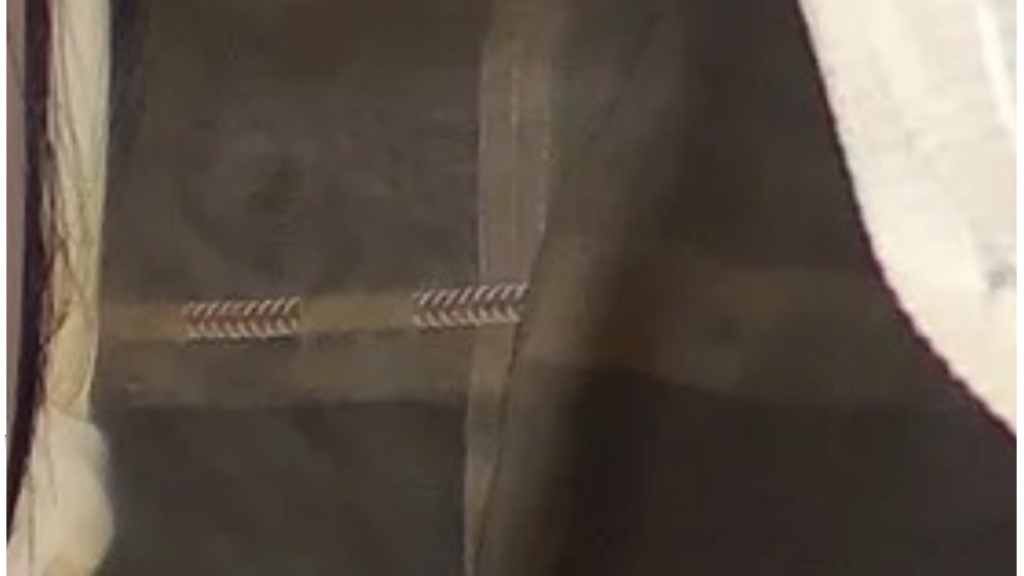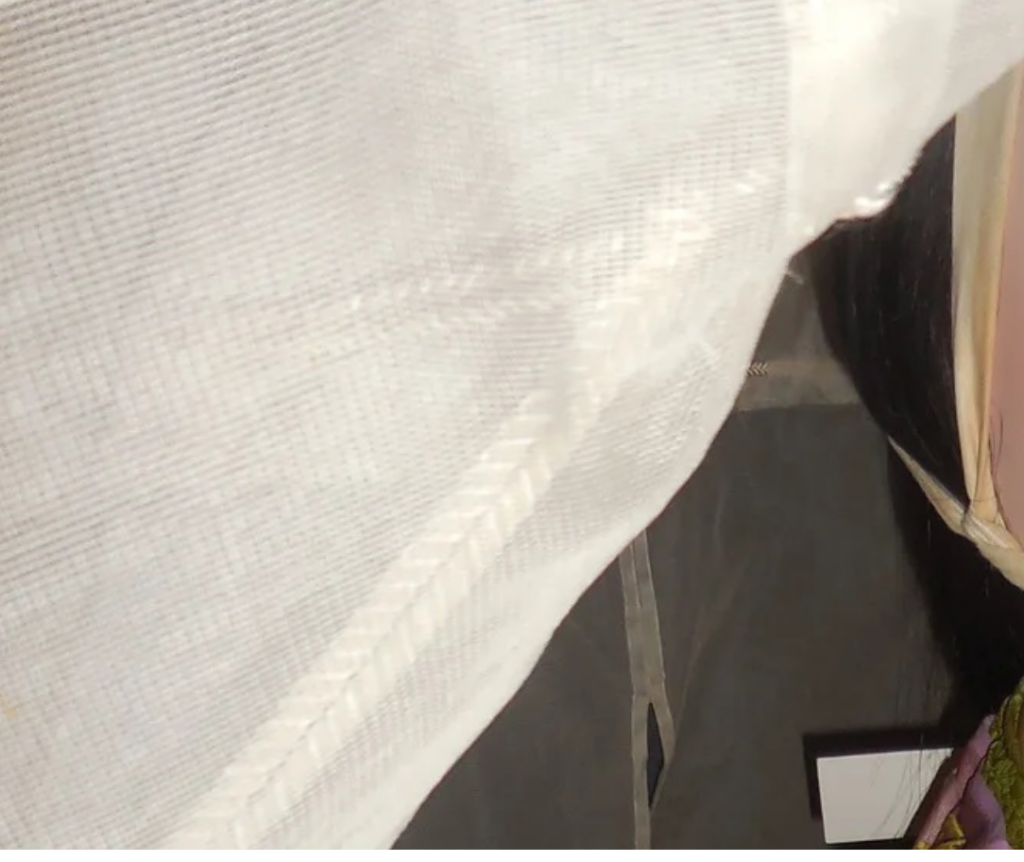I did a quick google search to find more images and hit a near jack pot. I’ve done the same search before, but was looking for copyright free images that time.
They are most definitely NOT attached to the hat. I don’t care what the line drawing has on it. The line drawing is wrong.
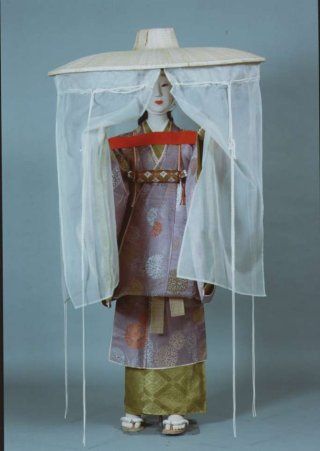
The kazari-himo (decorative cords) are woven through the panel, popping out at the halfway mark.
This image also lets me see the lady’s obi poking out beneath the fold of the garments, so we know the knot is tied in front. The kake-mamori amulet case, the rolled item around her neck beneath the kake-obi the red belt across her shoulders is worn under the kake-obi. You can see the cords that the kake-mamori is hanging from passing under the red.
We can also see that pattern matching on the garments is not a thing. This isn’t to say that it wasn’t done, just that it is acceptable to not. This makes me happy.
And while we’re picking this image apart, I’m confused by her feet. Where are her tabi socks? Was it really appropriate to wear zori (shoes) without tabi?
So now my question is – how do I best recreate what I’m seeing in this image? What I thought was a chevron pattern in a flat braid is likely two pieces of round braid. There is a little bit of a loop on the left hand side, so I’m confident enough in the two round braid idea. It also explains the weirdness I was seeing on the left hand side of my super zoomed in shot.
My first idea is to lay out the cord like the outline of a capital “T”. The arms of the T would be loops. Each panel gets a cord woven though it like that. The tips of the T arm loops will be tacked down to the panel.
I feel good about this plan. Like good enough to cut little slits in finished panels kind of good.
I also think this image will serve as my main presentation image. A side by side with it and me in the finished outfit in the same pose will look fabulous. The side by side was a bit of advice from a commenter on my first A&S display in September.
Hooray for finding just what you need on the internet!
